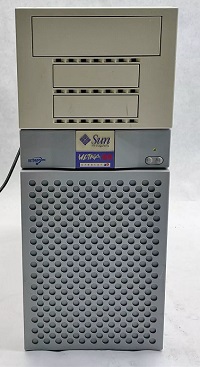
Launched in 1999, the UltraSPARC 60 represented a significant advancement in Sun Microsystems’ line of processors, designed to meet the escalating demands of high-performance computing in enterprise environments. As part of the UltraSPARC family, the UltraSPARC 60 was built to provide enhanced processing capabilities, efficiency, and scalability for servers and workstations.
Architectural Features
At the heart of the UltraSPARC 60 was its 64-bit RISC architecture, which offered substantial performance improvements over its predecessors. Operating at clock speeds ranging from 400 MHz to 750 MHz, the UltraSPARC 60 included several key architectural innovations:
- Dual-Processor Support: One of the standout features of the UltraSPARC 60 was its ability to support dual-processor configurations. This allowed systems to be built with increased processing power, making it well-suited for environments that required robust computing capabilities and high availability.
- Large On-Chip Cache: The UltraSPARC 60 featured a substantial Level 2 cache, typically around 2 MB, which helped reduce latency and improve data access speeds. The increased cache size enabled better handling of demanding workloads, enhancing overall system performance.
- Advanced Floating-Point Unit: With an enhanced floating-point unit, the UltraSPARC 60 was capable of executing complex mathematical calculations efficiently. This made it particularly valuable for scientific computations, financial modeling, and engineering simulations where precision and speed were critical.
- Improved Memory Bandwidth: The UltraSPARC 60 supported a high memory bandwidth of up to 4.8 GB/s, which was crucial for applications that required rapid access to large data sets. This capability enabled organizations to run more demanding applications without compromising performance.
Applications and Impact
The UltraSPARC 60 was integrated into Sun’s high-performance server lines, including the Sun Enterprise 250 and 4500 series. These systems were designed for reliability, availability, and serviceability (RAS), making them ideal for mission-critical applications in various sectors, including finance, telecommunications, and research.
Organizations utilized the UltraSPARC 60 to run complex enterprise resource planning (ERP) systems, customer relationship management (CRM) applications, and large-scale databases. The dual-processor configurations allowed businesses to enhance their computing power significantly, enabling them to handle increased workloads efficiently.
Legacy and Evolution
The UltraSPARC 60 played a crucial role in solidifying Sun Microsystems' reputation as a leader in high-performance computing. Its architectural innovations and capabilities set the stage for future processors, including the UltraSPARC III, which further improved performance, scalability, and energy efficiency.
Moreover, the UltraSPARC 60 was instrumental in the broader transition to 64-bit computing in enterprise environments. As organizations sought to manage larger datasets and more complex applications, the UltraSPARC 60 provided a robust solution, helping to drive the adoption of 64-bit operating systems and software.
Conclusion
The UltraSPARC 60 was more than just a processor; it was a pivotal technology that shaped the landscape of high-performance computing at the turn of the millennium. By delivering advanced features like dual-processor support, a large cache, and improved memory bandwidth, it empowered enterprises to tackle increasingly complex computational challenges.
Its legacy continues to influence modern processor design, underscoring the importance of innovation in meeting the demands of today’s data-driven world. As organizations evolve in their computing needs, the advancements introduced by the UltraSPARC 60 remain a testament to the enduring impact of high-performance architectures.